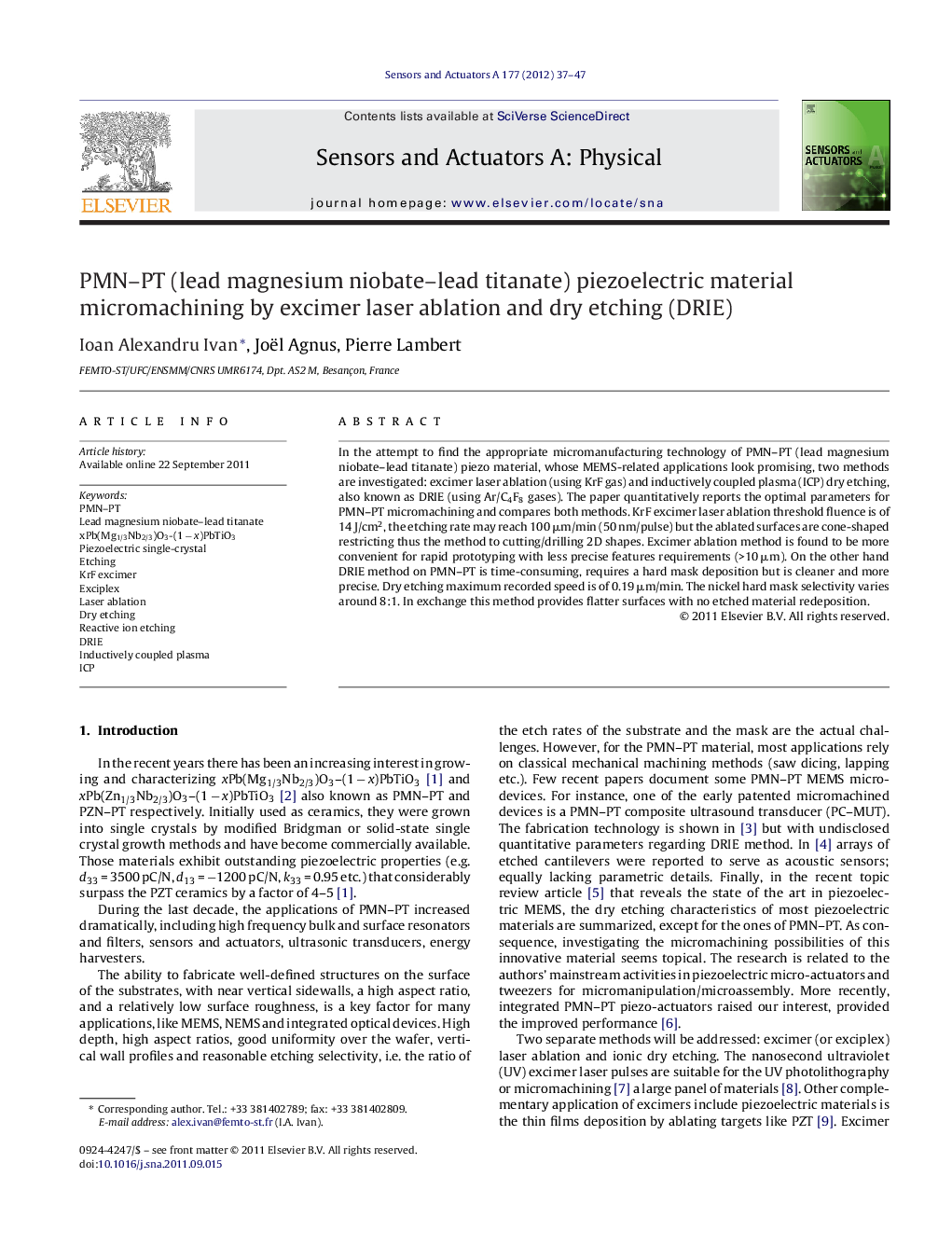| Article ID | Journal | Published Year | Pages | File Type |
|---|---|---|---|---|
| 737846 | Sensors and Actuators A: Physical | 2012 | 11 Pages |
In the attempt to find the appropriate micromanufacturing technology of PMN–PT (lead magnesium niobate–lead titanate) piezo material, whose MEMS-related applications look promising, two methods are investigated: excimer laser ablation (using KrF gas) and inductively coupled plasma (ICP) dry etching, also known as DRIE (using Ar/C4F8 gases). The paper quantitatively reports the optimal parameters for PMN–PT micromachining and compares both methods. KrF excimer laser ablation threshold fluence is of 14 J/cm2, the etching rate may reach 100 μm/min (50 nm/pulse) but the ablated surfaces are cone-shaped restricting thus the method to cutting/drilling 2D shapes. Excimer ablation method is found to be more convenient for rapid prototyping with less precise features requirements (>10 μm). On the other hand DRIE method on PMN–PT is time-consuming, requires a hard mask deposition but is cleaner and more precise. Dry etching maximum recorded speed is of 0.19 μm/min. The nickel hard mask selectivity varies around 8:1. In exchange this method provides flatter surfaces with no etched material redeposition.
